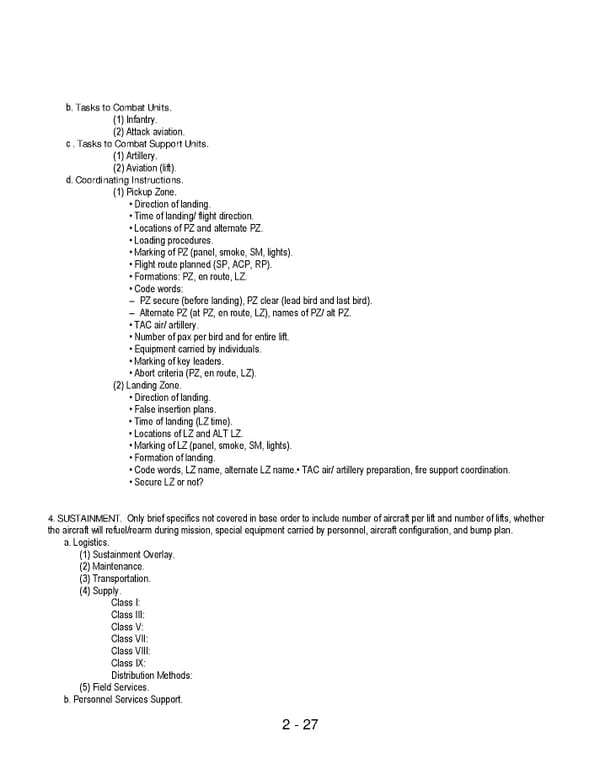2 - 27 b. Tasks to Combat Units. (1) Infantry. (2) Attack aviation. c . Tasks to Combat Support Units. (1) Artillery. (2) Aviation (lift). d. Coordinating Instructions. (1) Pickup Zone. • Direction of landing. • Time of landing/ flight direction. • Locations of PZ and alternate PZ. • Loading procedures. • Marking of PZ (panel, smoke, SM, lights). • Flight route planned (SP, ACP, RP). • Formations: PZ, en route, LZ. • Code words: -- PZ secure (before landing), PZ clear (lead bird and last bird). -- Alternate PZ (at PZ, en route, LZ), names of PZ/ alt PZ. • TAC air/ artillery. • Number of pax per bird and for entire lift. • Equipment carried by individuals. • Marking of key leaders. • Abort criteria (PZ, en route, LZ). (2) Landing Zone. • Direction of landing. • False insertion plans. • Time of landing (LZ time). • Locations of LZ and ALT LZ. • Marking of LZ (panel, smoke, SM, lights). • Formation of landing. • Code words, LZ name, alternate LZ name.• TAC air/ artillery preparation, fire support coordination. • Secure LZ or not? 4. SUSTAINMENT. Only brief specifics not covered in base order to include number of aircraft per lift and number of lifts, whether the aircraft will refuel/rearm during mission, special equipment carried by personnel, aircraft configuration, and bump plan. a. Logistics. (1) Sustainment Overlay. (2) Maintenance. (3) Transportation. (4) Supply. Class I: Class III: Class V: Class VII: Class VIII: Class IX: Distribution Methods: (5) Field Services. b. Personnel Services Support.
 Ranger Handbook Page 48 Page 50
Ranger Handbook Page 48 Page 50